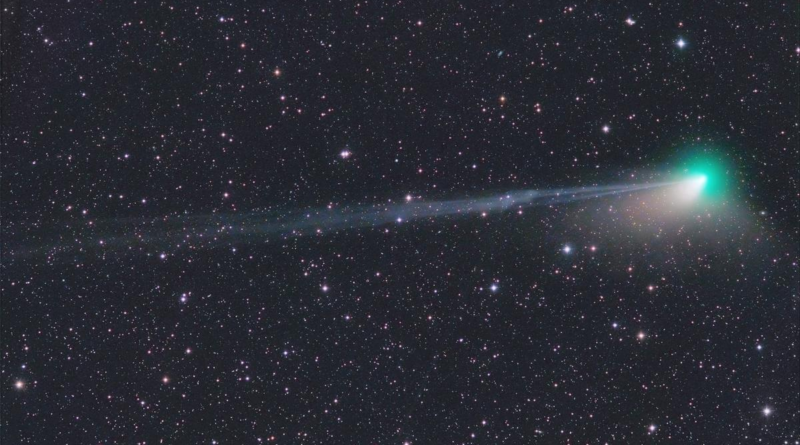Something weird is happening with the green comet's tail. It's disconnecting – India Today
By India Today Web Desk: Days after it came closest to the Sun, the rare green comet, astronomers observed something unusual happening with Comet ZTF (C/2022 E3). The rare green comet is on its way traveling toward Earth and is likely to be visible to the naked eye in the first week of February.
Astronomers have found that the comet is being disconnected and there is something weird happening to its tail. It is breaking off. Austrian astrophotographer Michael Jaeger captured the image of the comet on January 17 and found that its tail was slightly disconnected from the overall body.
The disconnect is likely due to solar wind hitting the comet. A study in 2018 found that when comets interact with the solar wind, straight and narrow plasma tails are often formed. "The most remarkable phenomenon of the plasma tails is the disconnection event, in which a plasma tail is uprooted from the comet’s head and moves away from the comet," the paper published in Nature stated.
The disconnect in Comet ZTF (C/2022 E3) is being attributed to a coronal mass ejection from the Sun that might have caused a magnetic reconnection in the comet's tail. Spaceweather.com reported that multiple CMEs have swept past Comet ZTF as a result of surging solar activity. One of them is responsible for the disconnection event.
Also Read | India's Himalayan telescope spots second comet in two weeks
Comet C/2022 E3 (ZTF) was first discovered in March last year by the wide-field survey camera at the Zwicky Transient Facility when it was already inside the orbit of Jupiter. While it was initially believed to be an asteroid, it began developing a tail as the Sun's influence began vapourising the ice. At the time of its discovery, it was shining with a magnitude of 17.3.
India's Himalayan Chandra Telescope had captured the comet on its way to the Sun while passing through the inner planets. The comet has a period of around 50,000 years and it last came in the skies above Earth during the Upper Paleolithic period, a time when Neanderthals roamed the planet and early homo sapiens had just come around.
The once-in-a-generation comet will be visiting the skies over Earth in February.
Also Read | New plateau found in Maharashtra could offer clues to surviving climate change



